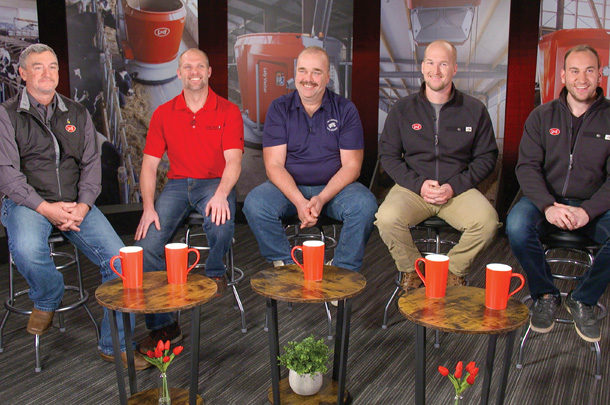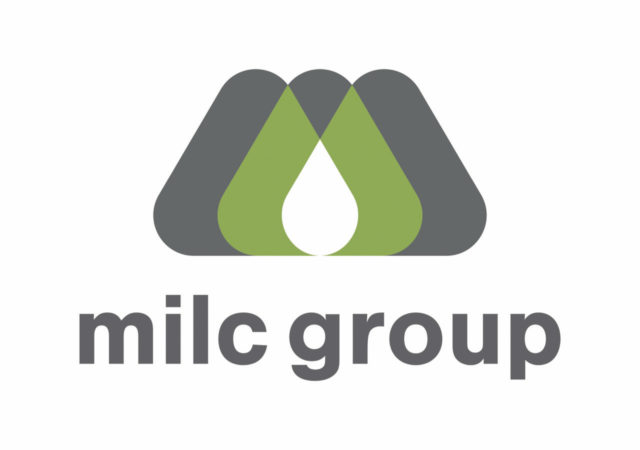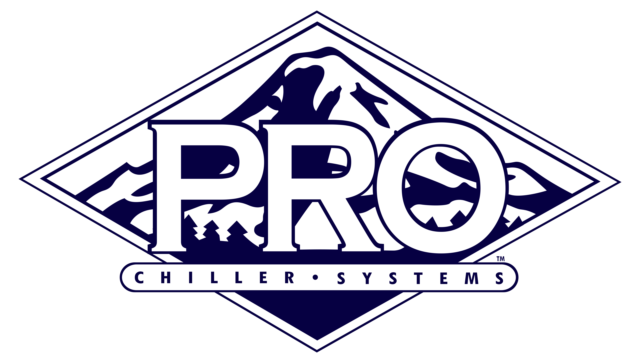To celebrate the 10th anniversary of the Vector automated feeding system, Lely North America held a roundtable webinar with four dairy producers from the U.S. and Canada.
Moderated by Joel Eberhart, commercial product specialist for barn and feeding with Lely North America, the producer panel included Frank Louwagie of Hillmanor Farms, West Perth, Ontario; Josh Poulin of Poulin Farms, Newport, Vermont; Jake Stephens of Trehane Holsteins, Niverville, Manitoba; and Dan Venteicher of Honey Creek Dairy, Strawberry Point, Iowa.
All the producers said they were drawn to automated feeding for labor reduction, feed consistency, accuracy and keeping bunks full.
“One of the benefits we saw with milking with robots was the consistency ... so we just took that further and said, ‘Well, the feeding is the same,’” Louwagie said.
The Louwagies moved into a new cross-vent barn with automated milking and feeding for their herd of 150 cows in November 2020.
High-producing cows need to always have feed in front of them. “Most farms will experience some empty bunks every once in a while by mistake, and [automated feeding] never lets that happen,” he said.
Poulin manages a grain business while filling in as the relief feeder on his family’s dairy with 360 Jersey cows. They put in automated feeding in the summer of 2020. Instead of using a feed grabber to pick ingredients from the feed kitchen floor, the Poulins installed Valmetal Combox silage reserve commodity boxes to store and dispense forages to a conveyer that feeds the automated mixer.
For their farm, this system adds more consistency for the forages brought in from silage bags and flexibility in delivering feed.
“I can fill those boxes just once a day, and it’ll take it to the following day,” Poulin said.
With his dad looking to step away from his daily farm role, Venteicher knew he couldn’t manage the 180 cows, keep up with chores for the automated milking units and feed cows all on his own.
“If I wanted to hire out the feeding portion, the success of our feeding program is 100 percent dependent on the caliber of employee I hire,” Venteicher said. “If that person doesn’t care as much, there goes my feeding quality. We wanted the same mix, the same consistent quality every day and we knew [automated feeding] could do that for us.”
They started using the automated feeding system in December 2019, a month before they started up their automated milking units, and saw a 4-pound-per-cow increase in milk production from that change alone.
After firing up the milking robots and milking cows more than 2X through the parlor, they were able to achieve a peak production of 111 pounds energy-corrected milk.
“I never thought something like that would be possible, and I fully believe it is fresh feed available all the time,” he said.
Venteicher mentioned that multiple feedings per day has cut down his fetch list for the milking robots. “We’re stretching out the cows’ eating schedule, so they don’t all come to the bunk and then all want to go visit the robot,” he added.
With a new facility, automated feeding and milking all at the same time, Louwagie can’t attribute a production jump to any one item but did comment that the frequency with which the mixer travels the barn has helped call the cows to the feedbunk more.
The biggest increase Stephens noticed with his 200-cow herd was an increase in pregnancy rate. The farm was running 28%-30%, but in a few months’ time was able to get to 35%-36% and even hitting 44%.
Previously, heifers and dry cows were fed a mix to last two to three days. The feed alley wasn’t covered to get a tractor through it, and feed had to be removed if it rained or snowed. With automated feeding installed in 2014, they could put a roof over it and the animals were getting fresh feed two to four times a day.
“We start feeding our animals with [automated feeding] at about six to eight months of age, so our growth is just through the roof on them. We’re breeding them right at 13 months and calving them in about a 23-month average,” Stephens said.
He noted they were able to cheapen their heifer diets because the animals were gaining well on higher dry matter intakes (DMIs).
Feed refusals
“If it’s managed well, the amount of overfeeding is really minimized,” Louwagie said.
They used to overfeed by 10%. Refusals were fed to heifers, “but it’s often expensive heifer feed,” he added.
Now, he estimated the overfeeding is less than 1%. In the winter, feedbunks are cleaned about once a month with a shovel.
Never wanting to run out of feed for his cows milking around 105 pounds per day, Stephens was also overfeeding by 10%. Now, he cleans the bunk every three days and is removing far less feed.
“We’re not cleaning up anywhere near 10 percent anymore,” Stephens said. “We’re keeping a lot more down, and it’s a huge savings.”
Poulin used to clean up feed every day and now does it once a week in the winter and every other day in the summer. Feed refusals were 3,000 to 4,000 pounds a day, and now it’s maybe 500 pounds.
“If you start doing the math on that, there’s a pretty big savings on feed,” Poulin said. “I’ve seen it in the feed inventories on our forages.”
Filling the kitchen
It takes Poulin an hour to an hour and a half to fill the feed kitchen. “We fill our kitchen once a day, even in the summertime, and we seem to have no real issues with heating,” he said.
In the winter, Venteicher spends 35-40 minutes filling the kitchen and about 50 minutes to an hour in the summer. On hot, humid days, he’ll fill it 40% full in the morning and then do the remaining 60% in the afternoon.
He said, “I think that’s really unique that we can ensure during the dog-heat days of summer, we can have incredibly fresh feed in front of them.”
Venteicher uses a dump trailer to bring feed to the kitchen and leaves it in loose piles. His kitchen is equipped with a feed grabber, which he said provides flexibility in the number of commodities they can feed.
Louwagie invested in a block cutter to cut portions from his forage bunkers and deliver a “stable chunk of feed” to his feed kitchen.
He has room to spare in his feed kitchen and will bring in extra days’ worth of feed in the winter before snowstorms or holidays.
Winter weather
Some of the other producers mentioned they have the capacity and will bring in extra feed ahead of storms as well.
In Manitoba, Stephens will also pause the outdoor routes to the youngstock and dry cows overnight if snow is in the forecast. They’ll increase feedbunk levels in the afternoon prior to be sure those animals don’t run out of feed before they start the route again in the morning.
For the most part, he said it can easily push snow out of the way and will travel well in winter if it can get a good grip, which can be helped by sand and salt on the path.
He said it works better than spending an hour or two breaking up ice to open overhead doors to drive in the barn. Then there is starting tractors in -30 to -40ºC, waiting 10-15 minutes for the loader to work and leaving them to run for four hours a day.
Cost savings
Venteicher said he would always have a couple of tractors plugged in during cold weather and the block heater was more expensive to run than the automated feeding.
Stephens agreed, “I can’t even start a tractor for what the [automated feeding system] costs running for the whole day with the grabber and everything.”
When they first put it in and were feeding 100-120 cows and all the youngstock, he said his operating costs were $2.25 to $2.50 a day, admitting electrical costs are low in Manitoba. In addition, their fuel order decreased by about 6,000 gallons a year.
Maintenance
Stephens has two mixing and feeding robots in his automated feeding system and figured they average $2,000 to $2,500 a year on maintenance, with him and his father doing a lot of the work themselves.
In the two years he’s been operating, Venteicher said he’s spent less than $1,200 a year on maintenance. Thus far, they replaced the rubber around the skirt, the charging ports and the batteries, which could have gone longer, he said.
Poulin works with his local dealer to make sure there are parts stocked in case they are needed, but so far, he hasn’t had to do any repairs.
Alarms
“If you get an alarm, it’s usually something that you did,” Venteicher said. “Ninety-nine percent of the time, if it calls you, it’s your fault. You didn’t put feed in it. You left a ladder in front of it.”
Poulin said he is more likely to get an alarm due to a flow issue with feed coming from the boxes or bins, while Louwagie noted block placement is critical to keep his system operating well.
“As a machine, it’s really reliable,” Louwagie said. “Most of [the alarms] are self-induced.”
Labor savings
“It saved us an hour to an hour and a half a day, which we have been very happy with,” Venteicher said. “When you’re a small family farm, every hour counts.”
Poulin continues to feed heifers and some dry cows with another mixer wagon but figured they were able to cut feeding time in half, by about three hours, in automating feed for the milking cows. Some days, most of his time is spent traveling to collect feed from the end of a 500-foot silage bag.
Payoff
Poulin originally figured it would take a little over three years for a payback. Only 18 months in, he said it has a lot of life left with no maintenance to date. “I think it’s definitely going to be pretty easy to pay itself back,” he said.
Venteicher’s situation was somewhat unique. They had originally set a construction budget to add automated milking to their farm. When they decided to add in automated feeding as well, they were able to reconfigure the barn design and reduce the building costs to cover the purchase of the automated feeding. The barn no longer had to be large enough to accommodate a tractor and mixer wagon.
“We were hoping if we could gain a couple pounds [of milk] per cow, the [automated feeding] would pay for itself,” he said. “But being able to customize our barn shape and our barn design, we shaved enough cost off to help pay for the [automated feeding], let alone the performance increases we’ve seen from the cows.”
Stephens calculated it took them one year and eight months to pay for the initial automated feeding system with savings in feed, fuel, maintenance and increased milk.
The entire roundtable presentation is available to view online (Lely Vector Roundtable).







